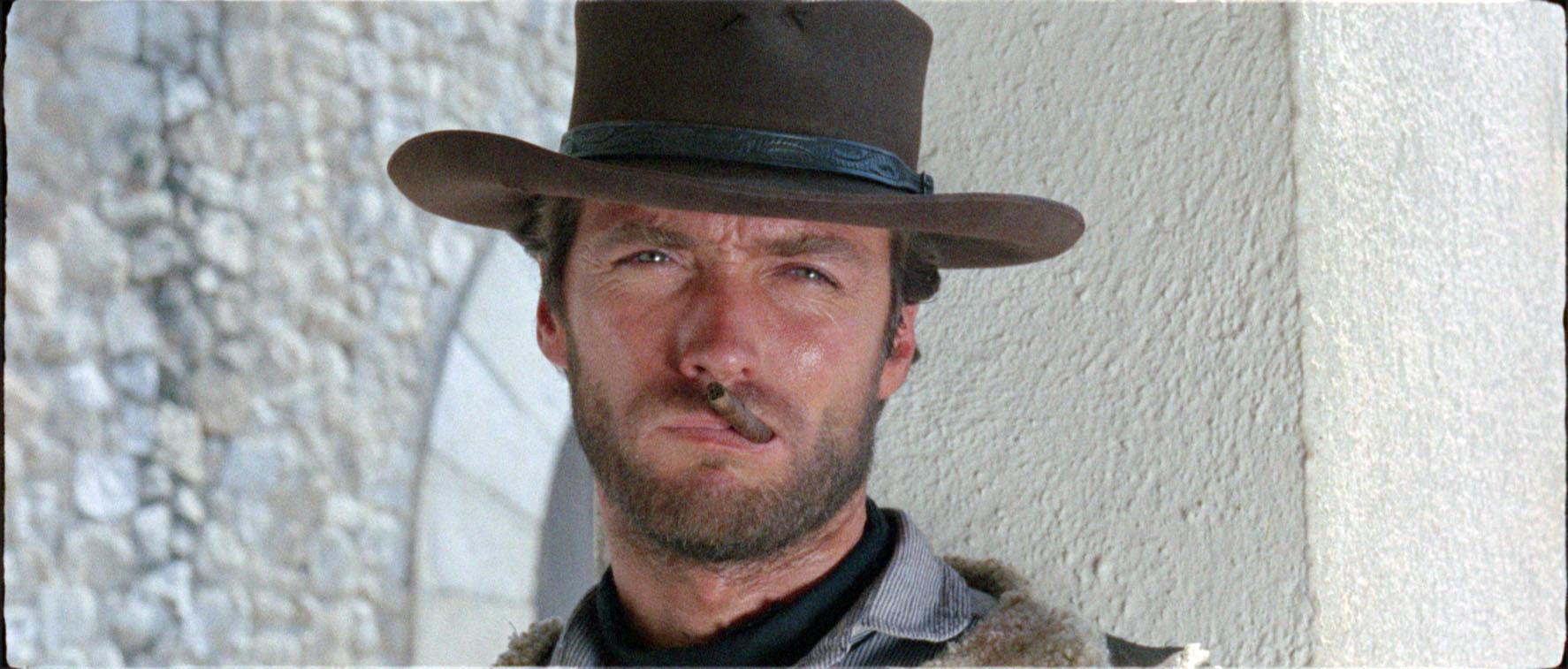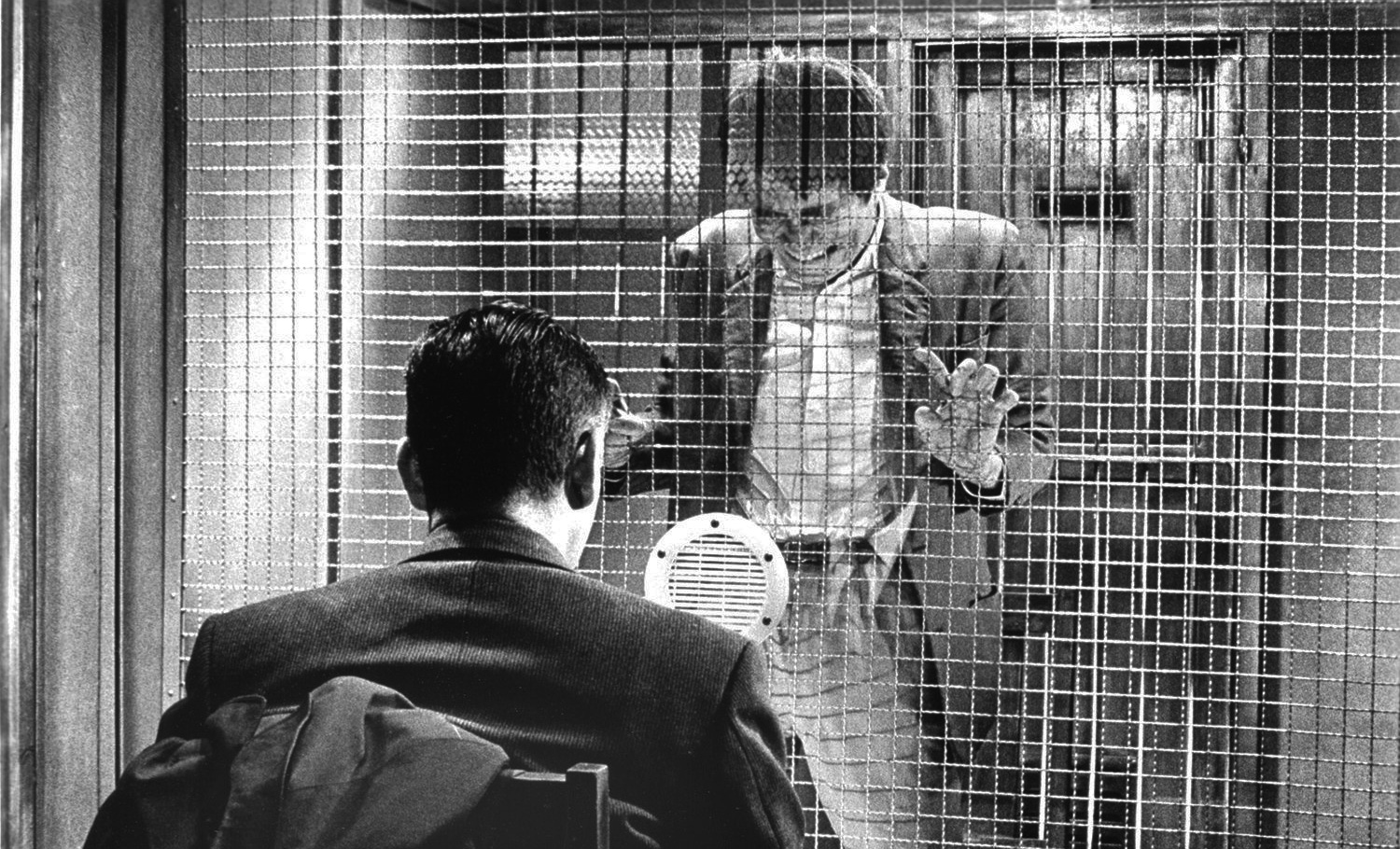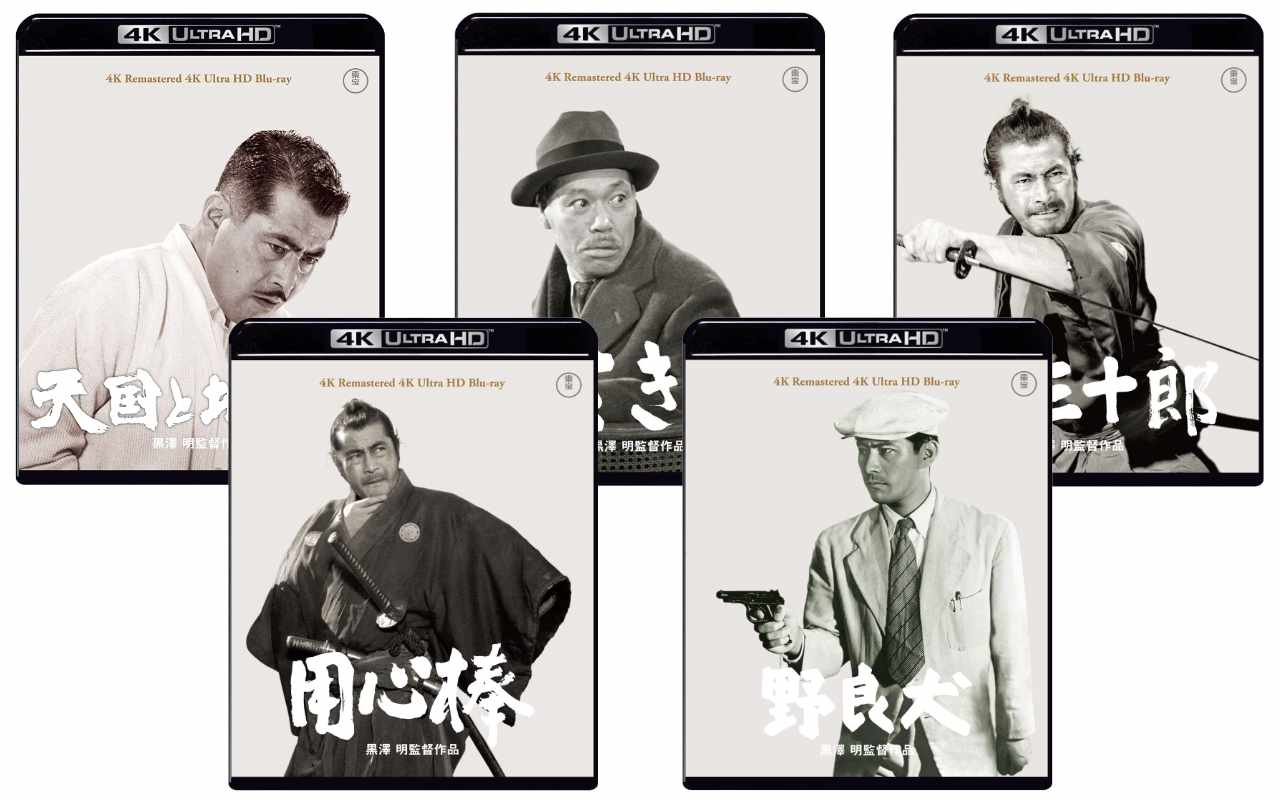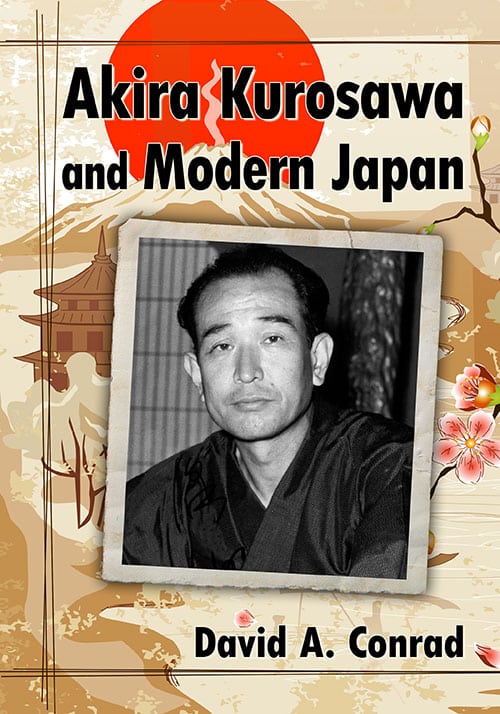 The month of July is the month of Yojimbo (用心棒) at our very own Akira Kurosawa film club, as we continue to progress through Kurosawa’s chronology and related films.
The month of July is the month of Yojimbo (用心棒) at our very own Akira Kurosawa film club, as we continue to progress through Kurosawa’s chronology and related films.
To get the party started, I have as usual typed up a brief introduction to the film.
Background
Released in 1961, only a little over half a year after The Bad Sleep Well, Yojimbo can be seen as something of a change of gear for Kurosawa and the summation of ideas that he had begun to consider in his recent films. In the 19 films that he had directed preceding Yojimbo, Kurosawa had time and time again been concerned with the question how to live properly and responsibly, both on individual and social levels. He had documented the rebuilding of Japanese society after the war, criticising and questioning many aspects of the ongoing reconstruction.
Kurosawa had been especially critical about the rampant financial and moral corruption that he saw in postwar Japan, with many of his post war films dealing with the dark underworld of contemporary Japan. The film that immediately preceded Yojimbo, The Bad Sleep Well, had gone as far as to directly accuse the government of corruption. Yet, even in his most pessimistic films, Kurosawa had ultimately aimed to educate, especially young people, by showing that there are alternatives to the corruption, and a better way of living both as individuals and as a society.
Yojimbo is different in this sense. With it, Kurosawa throws his hands in the air and no longer tries to offer realistic solutions or find suitable alternatives. Instead, he offers a purely cathartic fantasy where the evils of a corrupted society are dealt by a superhuman hero. In Yojimbo, almost everyone’s actions are questionable. Fire is fought with fire.
I was so fed up with the world of Yakuza. So in order to attack their evil and irrationality, and thoroughly mess them up, I brought in the super-samurai played by Mifune. He was himself an outsider, a kind of outlaw, which enabled him to act flexibly, if sometimes recklessly. Only such a samurai of the imagination much more powerful than a real samurai, could mess up these gangsters. The film sort of evolved from there. (Kurosawa in an interview with Joan Mellen in 1975, reprinted in Cardullo, page 63)
In Kurosawa’s chronology, Yojimbo anticipates the larger thematic shift which happens a few years later following the release of Red Beard, as Kurosawa begins to move into what could be described as his late period, marked by increased pessimism about his or his characters’ powers to initiate meaningful change.
Influences
Kurosawa recognised the 1942 film noir adaptation of Dashiel Hammett’s novel The Glass Key as an influence on Yojimbo, and a few scenes in particular follow the Stuart Heisler directed film rather closely. Additionally, despite Kurosawa himself never apparently having acknowledged it, the story seems to have been influenced also by Hammett’s novel Red Harvest, with which it shares many similarities, indeed perhaps more so than with The Glass Key (see more here). Hammett, of course, is well known in the film world as the original author of hardboiled detective novels such as The Maltese Falcon and The Thin Man which were turned into successful Hollywood films.
Another foreign source for Yojimbo was the American western, from which it borrows visual characteristics. Kurosawa, of course, admired John Ford, and Yojimbo can probably be described as the closest Kurosawa ever got to making a western.
Yet, if we were to describe Yojimbo solely as a Hammett adaptation with John Ford influences, we would be missing a great deal. First and foremost, Yojimbo is a genre film which plays with the conventions of earlier samurai films, drawing from works going all the way back to the pre-war classics, including Sadao Yamanaka’s Humanity and Paper Balloons. With Yojimbo, Kurosawa specifically set out to push boundaries, introducing a type of realistic violence that had not been seen before. He wanted to show how artificial samurai films usually were, and how gruesome and horrifying killing someone can actually be. This is emphasised in the film both visually and with sound design.
Meanwhile, D.P. Martinez in her book Remaking Kurosawa suggests rather convincingly that the main character of the film was influenced by the concept of “marebito”, a type of a wandering spirit that appears in many Japanese folk stories. Martinez writes: “Marebito are mysterious strangers who appear in a town or village and who must be treated carefully, they bring blessings if they are treated well – giving them food and drink in the main – but can destroy a person or place if treated badly. … They are trickster deities, hard to pin down, playing jokes, unreliable.” (144) We have previously discussed Martinez’s theory on a few occasions, including in this thread.
Themes
Although a period film, and one possibly influenced by folk tales, the broad themes found in Yojimbo are in fact fairly contemporary.
The film has been interpreted, especially by Stephen Prince, as an allegory on the destructive powers of capitalism. Post-war Japan was, of course, undergoing a strong transformation into the economic powerhouse which it is today, but not without the type of problems mentioned earlier. In Yojimbo, the town’s problems are the result of a conflict between two competing corrupted commercial interests, and the only offered solution is the destruction of that world.
The film also has an overarching theme of tradition versus technology, or old versus new. This dichotomy had of course already been a recurring theme in most of Kurosawa’s post-war works, with the question “is all change good”, and in terms of post-war Japan, “is all western good”, most prominently posed by the director. In Yojimbo, the theme of foreign influences is most prominently displayed in the duel between Mifune’s sword fielding superhero and his antagonist, the gun slinging samurai portrayed by Tatsuya Nakadai. This piece of new technology threatens traditional values, so much so that even the superhuman hero is afraid of it. Yet, he ultimately finds a way to overcome the challenge posed by the gun — very much unlike what had happened in Kurosawa’s earlier Seven Samurai, where all of the samurai who die are killed by gunfire.
Less visually but no less straightforwardly, the theme of inevitable change is a part of the film by it being set in the 1860s, the early Meiji period. This was a time when Japan began to go through a significant change as a nation, opening up its borders and for the first time in hundreds of years accepting foreign, and especially western, influences. It is also when the country’s hierarchical class structure began to radically change, most notably with the samurai class becoming obsolete.
The theme of replacing the old with the new is also present on a level more personal for Kurosawa. Susumu Fujita, who worked as Kurosawa’s leading man for the director’s first four films, plays Homma, the fencing instructor who is replaced by the film’s hero, played by Toshiro Mifune, who had similarly replaced Fujita as Kurosawa’s leading man in the late 1940s. The scene where the departing Homma waves goodbye to Mifune’s hero works as something of an inside joke made for those who know Kurosawa’s career from the beginning.
Another aspect often discussed in connection with Yojimbo is its theatricality. The film is not only very carefully and often artificially choreographed, but the hero of the film also functions as something like a director who prepares and directs the plot towards his intended total destruction of the town. At least, until his antagonist appears in town and complicates issues.
Style
Yojimbo was Kurosawa’s third widescreen film and features some of his best and most innovative explorations of widescreen space, for which much praise should be given to his cinematographers Kazuo Miyagawa and Takao Saito. Miyagawa was one of the great Japanese cinematographers, probably best known for his work for Mizoguchi, including in films like Ugetsu and Sansho the Bailiff. He had famously worked also for Kurosawa before, having been responsible for the cinematography of the director’s international breakthrough, Rashomon. Yet, according to both Miyagawa and Saito, the shots used in the final cut of Yojimbo are in fact predominantly assistant cameraman Saito’s, whom Kurosawa gave near total freedom to find interesting and unexpected ways to shoot the action (see for instance Galbraith, page 308).
Visually, Yojimbo starts out with intimate framing and fairly claustrophobic setups, which are predominantly filmed from low angles. This compositional pattern changes and evolves as the film progresses and the screen space opens up. Shots are predominantly asymmetric but perfectly balanced, and because of Kurosawa’s trademark use of long distance lenses, the picture is quite flat and two-dimensional. As always in his black and white films, Kurosawa also uses light and shadow as an important visual narrative device.
The way the camera maps out the town is one of the best examples of Kurosawa’s geographic mastery. The visuals make it very easy for us to spatially understand how places and people are geographically related to one another. This is crucial, as geography in Yojimbo is an important metaphor, not least with the placement of the two feuding gangs at the opposite ends of the town and the hero occupying the space in the middle.
In addition to its visual style, Yojimbo is notable also for its soundtrack and sound design. Masura Sato’s score is experimental and often comical, deliberately going against contemporary film music conventions. Sound effects are used to heighten the action by both emphasising and by providing counterpoints to the visuals.
Reception
Yojimbo turned out to be a big box office success, earning more money than any Kurosawa film had before. Critical reaction to it was equally positive, with the film placing second in Kinema Jumpo’s annual top 10 list, and Toshiro Mifune receiving the the influential publication’s award for Best Actor of the year partly for his work in Yojimbo. (Galbraith, page 309)
Even more so, the film was a major influence on other filmmakers, immediately ushering in a new era of ultra-violent samurai films. This disappointed Kurosawa who felt that this reaction was exactly the opposite of what his intention with Yojimbo had been. He had tried to show the ugliness of violence, but had perhaps misjudged and made it look cool and stylish.
The film was very influential also outside of Japan, where its violence was similarly embraced. It would be impossible (or at least unwise) to list all the remakes and films that have been directly influenced by Yojimbo, but the best know direct remake is probably Sergio Leone’s critically acclaimed A Fistful of Dollars (1964, starring Clint Eastwood). Almost a shot-by-shot remake transported into an old west setting, the film is notorious for having been unauthorised. Following the film’s release, Kurosawa famously wrote to Leone: “Signor Leone, I have just had the chance to see your film. It is a very fine film, but it is my film. Since Japan is a signatory of the Berne Convention on the international copyright, you must pay me.” (quoted from Galbraith). A lawsuit followed, but the issue was ultimately settled out of court with Kurosawa and Toho receiving 15% of all sales of Leone’s film. It has been estimated that Kurosawa actually made more money from A Fistful of Dollars than from his own film. We will be watching A Fistful of Dollars in our film club next month.
Another well known Yojimbo remake is the rather poorly reviewed Walter Hill film Last Man Standing (1996, starring Bruce Willis), which takes the story into prohibition era United States. Other permutations of Yojimbo include films that only use its main character, or those that copy its overall setup. Of the first kind there are works such as the 1970 Zatoichi Meets Yojimbo, or Kurosawa’s own 1962 sequel to Yojimbo, Sanjuro. We will be watching both films later this year. Of the films that rather make use Yojimbo‘s basic setup, the most recent big budget example is probably the 2012 martial arts film Dragon Eyes, starring Cung Lee and Jean-Claude Van Damme.
Another film worth mentioning in connection with Yojimbo is Django (1966), which much like A Fistful of Dollars is a spaghetti western with a storyline similar to that of Yojimbo. Featuring a heavy dose of over-the-top violence, Django had a number of sequels and remakes, and also influenced the 2007 Japanese film Sukiyaki Western Django by Takashi Miike, whose works often embrace the kind of violence portrayed in Yojimbo. Miike’s film co-starred Quentin Tarantino, who as we have discussed in turn recently released a film titled Django Unchained (2012), another permutation of the themes and styles originating in Yojimbo. This can be seen as a good example of a postmodern cross-cultural cycle of influence, as we move from the west (John Ford and Dashiel Hammett) to the east (Yojimbo) back to west (A Fistful of Dollars and Django), then again east (Sukiyaki Western Django), and now once again to the west (Django Unchained). We will be looking forward to the next Asian permutation of the cycle.
Previous discussion and availability
We have discussed Yojimbo before, and most discussion should be available through the forums’ Yojimbo tag.
For an English speaking viewer, the home video availability of the film is fairly excellent. For more information, take a look at the DVD and blu-ray sections of this website.
After Yojimbo, we will be watching A Fistful of Dollars in August. For the full film club schedule and information about the availability of the films that we watch, see the film club page.






Great intro, Vili. My dvd is out of action so I can’t watch it right now, but most of the film is still very vivid in my head. I’ll have to content myself with watching Fistful of Dollars in my local cinema tomorrow…